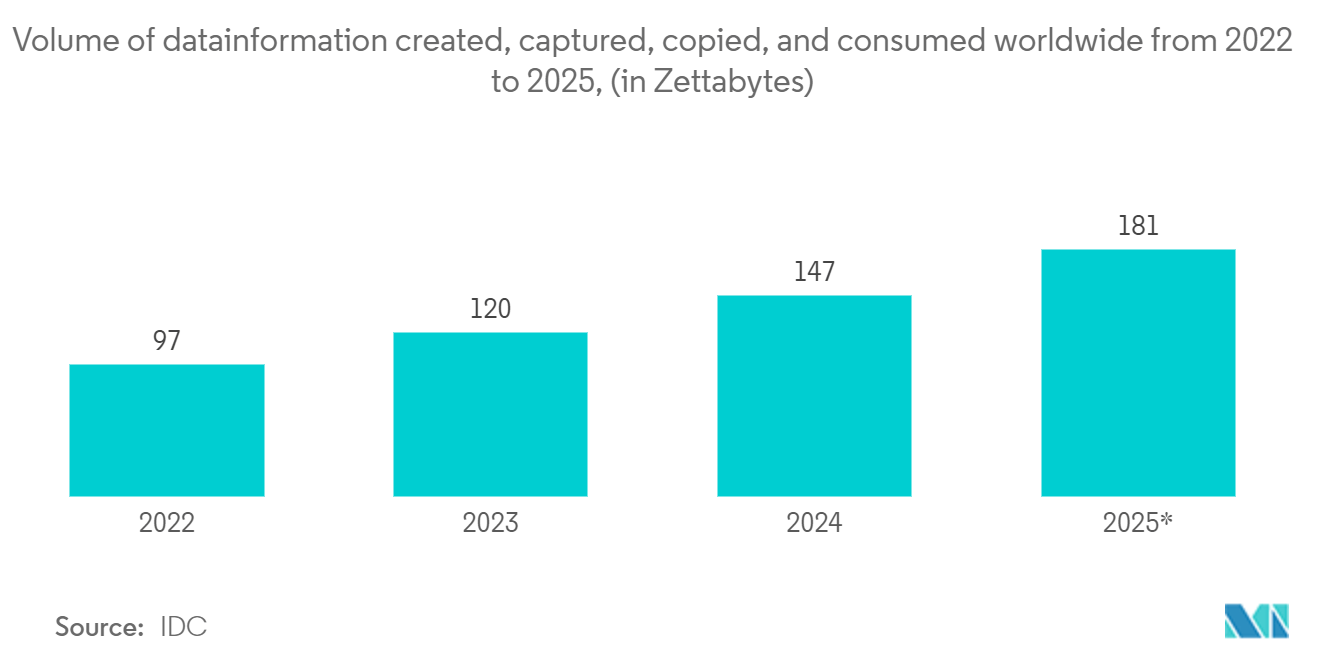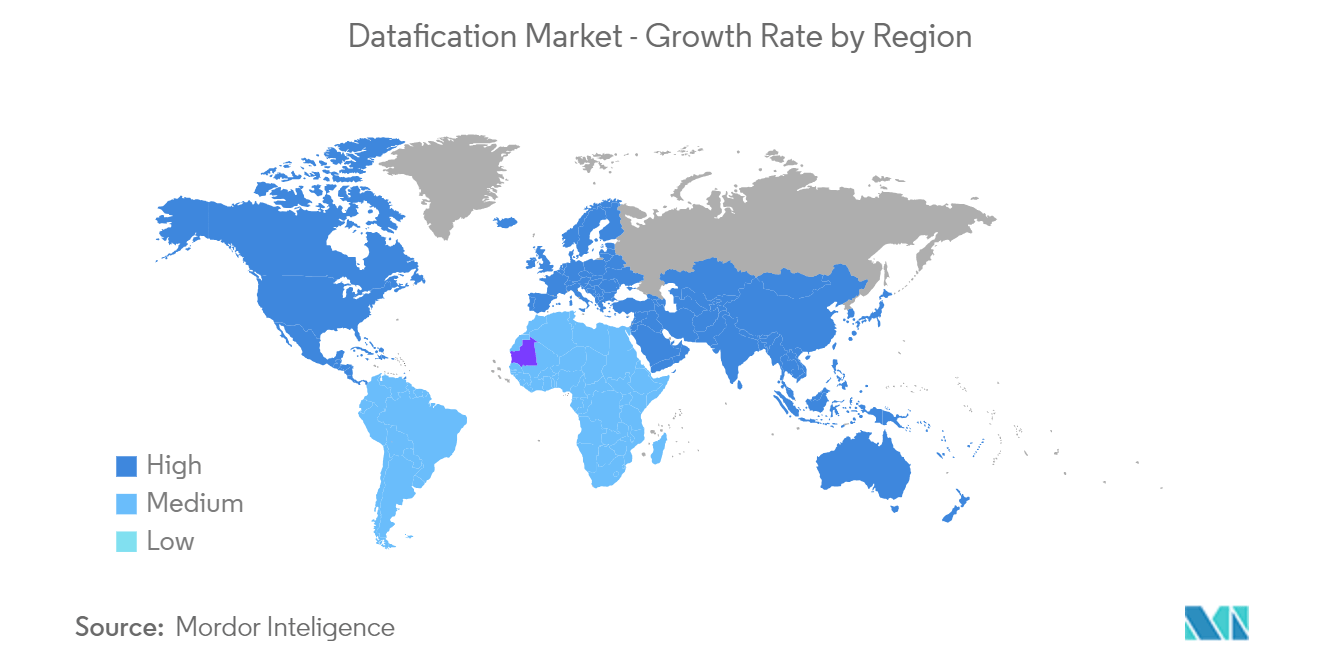Market Trends of Datafication Industry
The pace at which volume of data being generated
- Daily, billions of posts, photographs, and videos are created on social networking sites like Facebook, Twitter, and Instagram. Data streams are continuously produced by Internet of Things (IoT) devices like sensors and smart appliances. By the next three years, the amount of data generated globally is anticipated to exceed 163 zettabytes (ZB), as per reports by the International Data Corporation (IDC).
- Business strategy and consumer experiences are changing due to the sheer volume of data generated every day. Businesses are making use of this data gold mine to learn more about consumer behavior, market trends, and operational efficiency.
- Personal recommendations are made using client data by businesses like Netflix and Amazon. This data-driven strategy raises sales while enhancing customer happiness. Large amounts of patient data are produced through wearable medical technology and electronic health records (EHRs). This data analysis can result in improved patient care and early disease detection.
- Organizations can predict future trends using sophisticated analytics tools and machine learning algorithms in addition to understanding historical data. This allows organizations to make data-based decisions, improve client experiences, and streamline processes.
- Data analytics are essential in the financial sector for managing risks, guaranteeing compliance, and improving fraud detection. It enables institutions to manage investments, make informed lending decisions, and maximize their portfolios. Banks and other financial institutions use data analytics to identify fraudulent transactions and evaluate credit risk, which saves money and minimizes financial losses.
- Addressing the problems of rapid urbanization requires data-driven urban planning and administration. Cities can improve infrastructure, ease congestion, and improve the quality of life for citizens by evaluating data on traffic patterns, energy use, and public services. Also, to optimize traffic flow, energy consumption, and public services, smart city programs gather data from a variety of sources, including traffic sensors, cameras, and weather stations.

North America Expected to Witness Significant Share
- Some of the most well-known technology centers in the world are located in North America, primarily the United States. Companies like Google, which processes petabytes of data daily to improve its search engines and advertising platforms, were born in Silicon Valley's ecosystem. In addition to generating cash, these data analytics advancements also have an impact on international datafication trends.
- The widespread production of data from many sources contributes to North America's dominance in the datafication business. The IoT is being quickly embraced by the American automotive sector, allowing for the collection of real-time data from moving objects. This information is used by businesses like Tesla to improve the capabilities of autonomous driving and conduct remote diagnostics. The plethora of data production sources in North America guarantees a steady stream of data, which is essential to the market for datafication.
- To acquire a competitive edge, North American enterprises have embraced the power of data analytics. An industry standard, Amazon's recommendation engine uses advanced data analytics. To make product recommendations, it examines consumer behavior and past purchases, greatly boosting the company's revenue. North American Businesses are heavily invested in data analytics expertise and tools as a result of the data-driven mentality that permeates them.
- The economy of North America is diverse, spanning several different economic sectors with various data requirements in each. Due to this diversity, the datafication market's application has expanded into industries including banking, health care, manufacturing, and entertainment. Due to its broad industrial landscape, North America has a stronger position in the global datafication market because of data analytics solutions that are specifically adapted to each sector's needs.


